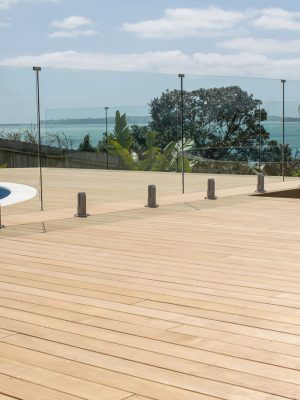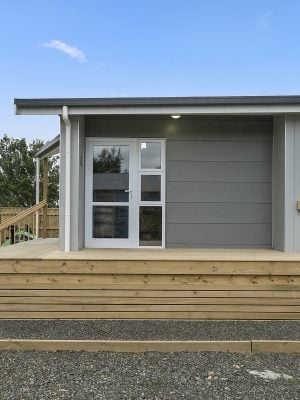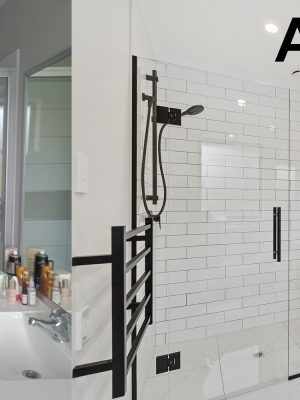There is something quintessentially Kiwi about a great deck – whether you use it for your barbecue, sunbathing, entertaining, or for your morning cuppa, a well-planned deck can really make your outdoor living sing.
If you’re considering a new deck, or just want to spice up your outdoor living a bit, read on for some handy tips and things to consider, then find a local builder here for more advice specific to your home and section.
What is your deck for?
In order to plan your outdoor living space properly, you need to have a good think about how you’re going to use it. Will you have outdoor dining, which includes a table and chairs? Or a lounge suite? Do you want built-in seating? Or need space for a barbecue and outdoor kitchen? Once you’ve figured that out, and factored in the room needed for people to move around those things, you can work out how big your new deck needs to be.
You’ll also want to consider the weather – do you want your deck north-facing to make the most of the sun? Or do you need shade, too? What about wind protection and privacy from your neighbours and any passersby?
Once you have decided on your location and size, check to see if there are services running through underneath, such as pipes, drainage, sewerage, or power/internet cables. You should also bear in mind that any deck over 1.5m in height requires building consent and a licensed builder to complete the work.

Abodo – Vulcan Decking, Uncoated
PHOTOGRAPHY CREDIT: Jiwan Singh

Timber, fixings and finishing options
The next thing to do is think about materials, as there are a few options. For a traditional deck, there are a number of timber options which vary in price.
A basic timber deck usually costs about $10,000 to $20,000, including boards, joists, and posts. Any additional features, such as built-in planters and benches, stairs, railings, trellis, and custom lighting, will cost more.
The vast majority of entry level decks in New Zealand are pine, as it’s our most affordable timber, but it also means choosing an appropriate decking finish is very important.
Pine requires a paint or stain finish – ideally in a shade which complements or contrasts your the exterior of your home. When choosing a colour, bear in mind it may fade or change due to weathering, so don’t skimp on your stain or paint. For the best result, depending on the season, you may want to wait a few months so the timber continues to dry out before applying a treatment.
Macrocarpa is also often used for decking in New Zealand because, much like pine, it’s economical and easy to source. However, this softwood isn’t as enduring as the more expensive hardwoods such as Kwila, Garapa and Purple Heart, so it may be worth investing in a hardwood option.
In order to ensure the longevity of your deck, it’s important to use high quality fixing options. Even for budget-conscious homeowners, we recommend spending a few hundred dollars on stainless steel fixings, or hot-dipped galvanized fixings at the very least, along with proper nails or screws which are designed specifically for decking.


What other options are there?
Building a deck can be expensive but it doesn’t mean you have to miss out on having a stylish new outdoor area! If timber exceeds your budget, you can still create a stylish outdoor entertaining area with large pavers or coloured concrete, which can be cut into squares.
You could also use a combination of pebbles and stones – just remember when you’re budgeting that you’ll need a coverage depth of at least 50mm, along with waterproofing plastic underneath. This style of outdoor area looks best if you soften the edges with lush green planting or timber sleepers.
Or, for something completely different, you may consider composite decking made with recycled materials like wood waste and plastic bags. This type of decking requires minimal maintenance, does not need to be sanded or painted and is generally weather-resistant, making it very long-lasting.
However, some composite deck materials can be prone to mildew, so regular cleaning is needed to avoid it getting slippery. The durability and convenience of these products does mean they’re more expensive than timber, and you may still require fixings.
Maximise your outdoor living
Interior designers always recommend you treat your outdoor space as if it’s another room in your house, that way you’ll end up with a space which is both useful and adds value to your home. Think about adding soft furnishings, plants, lighting and even art. All these things will contribute to creating a welcoming space for your family and guests alike.
There are a number of other things you can do to enrich the look of your deck and the functionality of your outdoor area. These include:
- Add storage for outdoor furniture covers, cushions, and rugs – this can also double up as extra seating
- Create a feature border by running your timber in different directions
- Build in some basic cut-outs and use plantings to create focal points
- Add in timber or synthetic trellis and or railings
- Consider low-voltage deck lighting
A regular maintenance programme is also needed to ensure your new outdoor area lasts as long as possible. For timber decks, ensure you clean it regularly and apply a fresh coat of paint or stain every two to three years. This will help you get a lot more life out of both your deck and, in turn, your outdoor living.
To find a nearby NZCB builder to help you design and build your new deck and outdoor living area, use the Find A Builder search function on this website.
Photography supplied by Abodo






